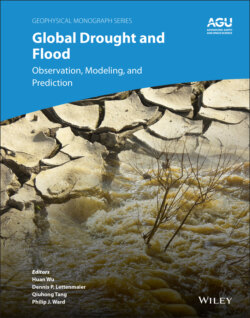Читать книгу Global Drought and Flood - Группа авторов - Страница 44
ABSTRACT
ОглавлениеDrought can significantly impair water availability, agricultural productivity, ecosystem health, and the economy. The advent of satellite remote sensing has meant that reservoirs can be observed from space, which offers a unique promise for monitoring hydrological drought. Thus, the overarching goal of this chapter is to review and explore how these remotely sensed reservoir data (elevation, area, and storage) can be used for drought monitoring and decision making. Although reservoir storage is deemed to be the best indicator of drought severity, such data are only available for a small portion of reservoirs globally, mainly limited by the availability of altimetry measurements. Reservoir area data, which have better spatial and temporal coverage than elevation/storage data, can be used to derive a drought index suitable for monitoring purposes at local and regional scales. A new surface‐area‐based hydrological drought index has been introduced and compared with the meteorological drought index. The skills of hydrological‐modeling‐based drought monitors can be enhanced by incorporating remotely sensed reservoir information. Furthermore, new and future satellite missions, such as Ice Cloud and Land Elevation Satellite 2 and Surface Water and Ocean Topography, will make the global monitoring of reservoirs storage feasible.
